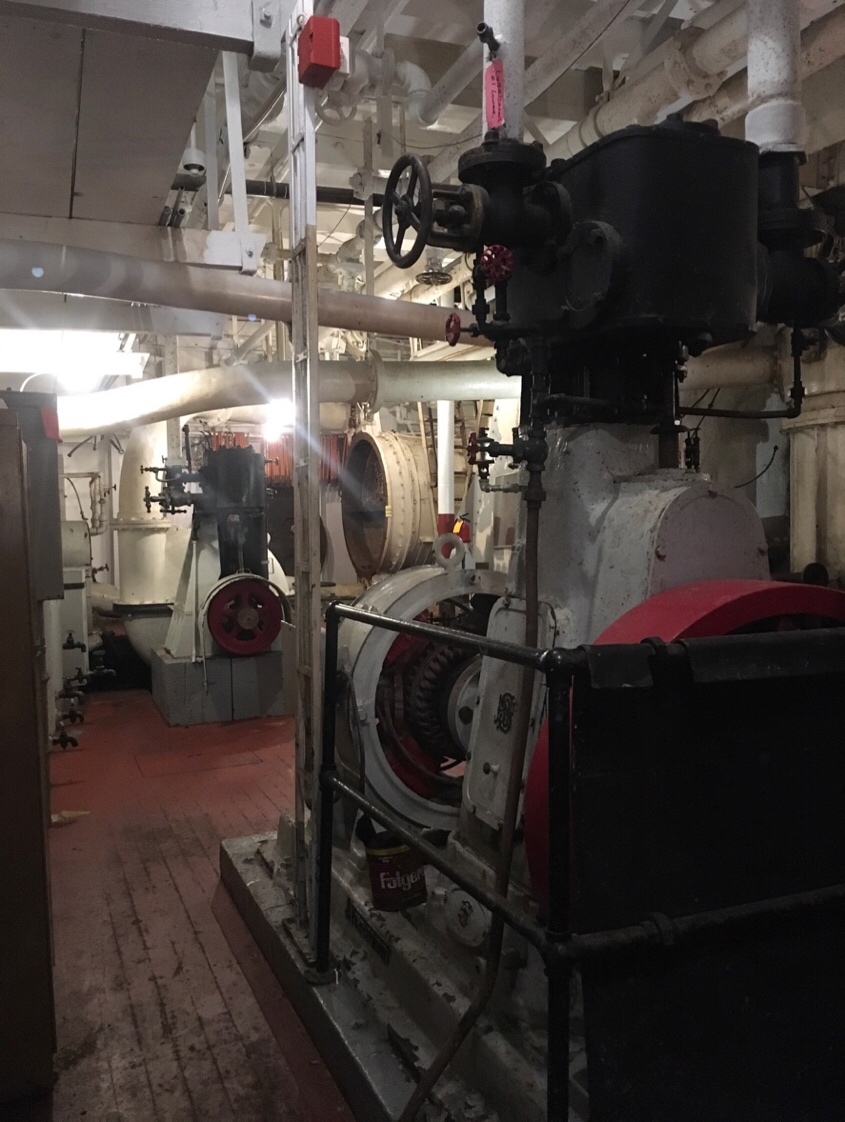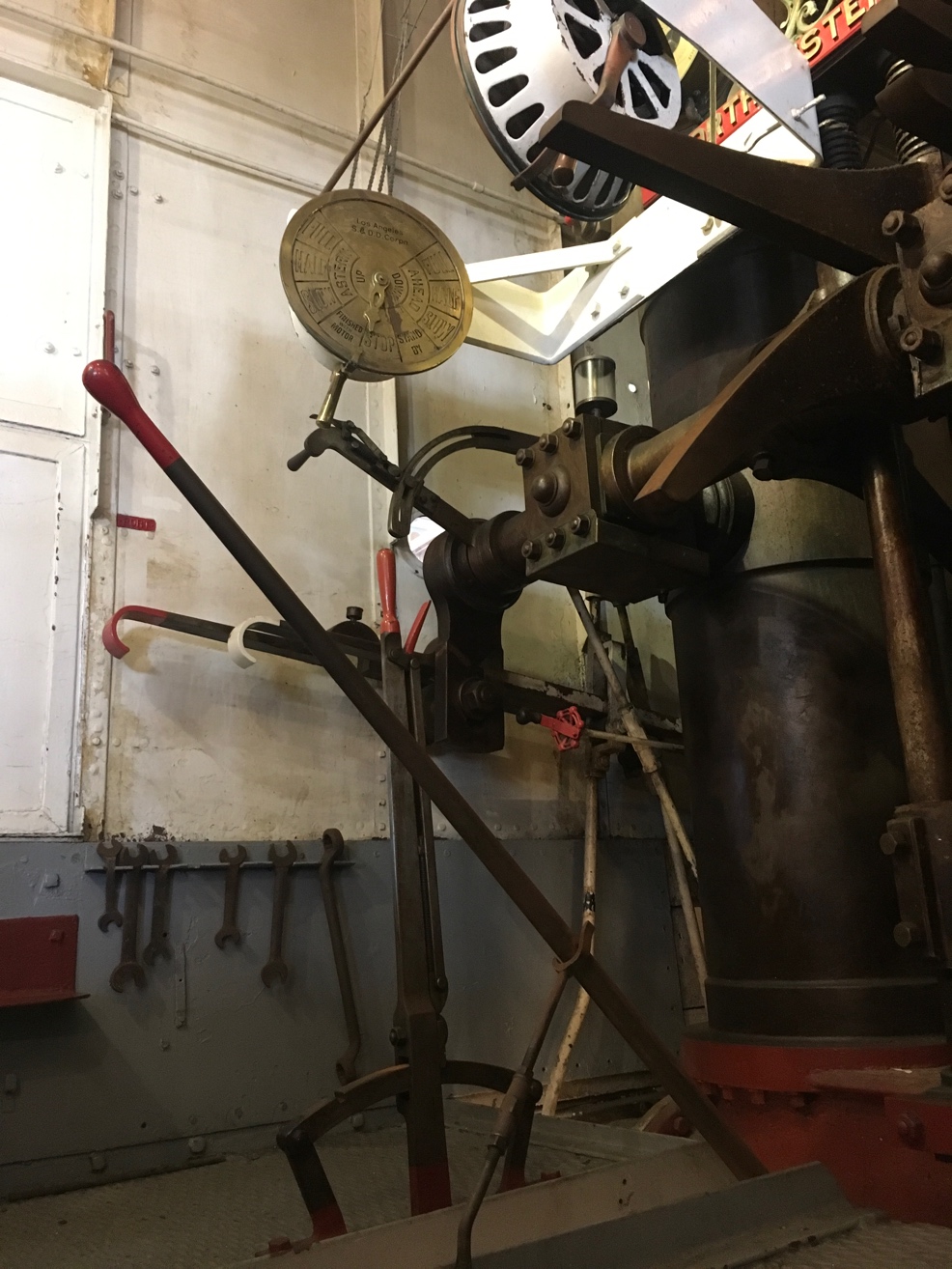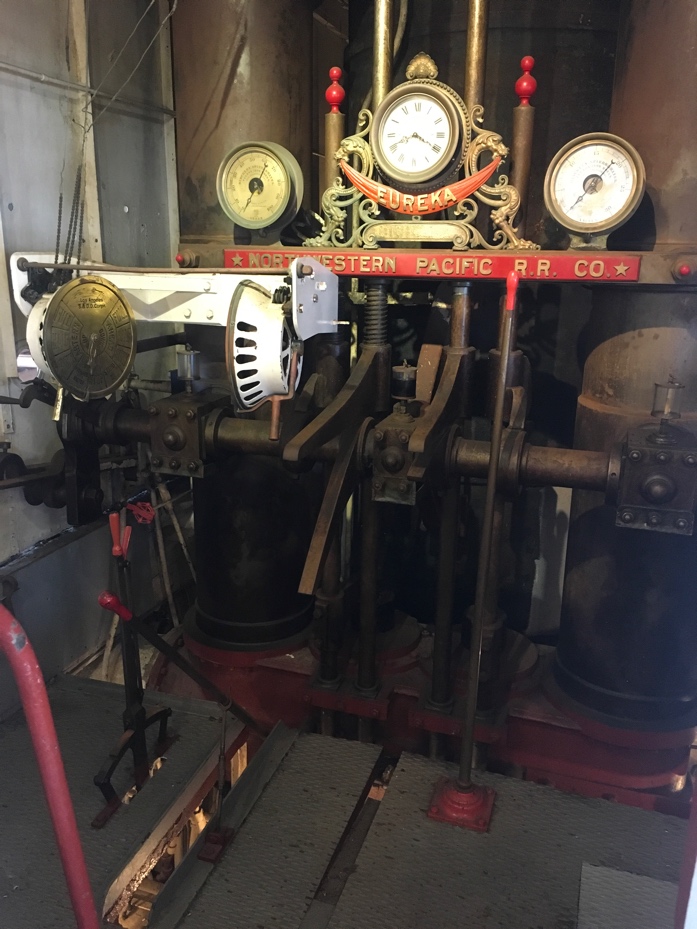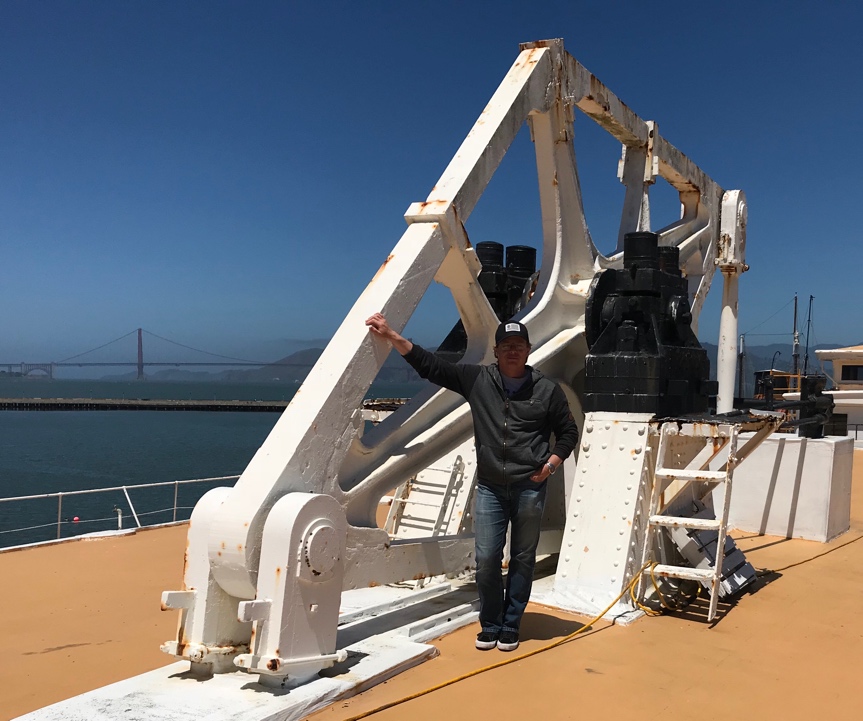From the boilers, we continue our trek through this Eureka’s below-deck cavern of machinery. First, we walk down a narrow alleyway by one of the boilers and step off of onto a secondary machinery flat. Here, we have two of the eleven auxiliary steam engines. These are two of the many small steam engines that help keep the Eureka up and running. They do not move the ship through the water, but they keep the lights on and help recycle the water that is used for steam. They also run at a fast speed and make quite a noisy racket. For some crew, they also present an ever present danger. For, like all the machinery on the ship, they must be kept well lubricated to ensure they do not overheat and break down. If they do, then things can start to fail, such as the lights going out. Not only would this plunge below deck spaces like the engine room into complete darkness, but if we were on a nighttime run across the bay, the entire ship might black out and make us invisible to nearby vessels. A collision might result with dire consequences. This job required a crewman, known as the oiler, to apply oil where needed and make sure it was not too hot. Great care had to be taken with this, for if not done right, it could lead to lost finger ends or worse. Only a practiced, steady, and confident hand would prevent maiming and keep the ship safely running.
| One of the auxiliary machinery flats in the engine room of the ferryboat Eureka. This view shows two steam driven machines. The one on the right of the image is one of two dynamos for producing electricity while the other machine in the background is the circulating pump used as part of Eureka’s water recycling system for her boilers. Though much smaller than the main engine, equipment such as these auxiliary engines were just as important for safe journeys back and forth across San Francisco Bay. |
 |
Likewise, the main engine required just as much care. The various parts of this engine, however, were of a completely different magnitude. For a view of this, we take a few steps up a small ladder and then through a circular opening into the main crank-well. In this lair lives the main engine crank of the Eureka’s walking beam engine and 6 feet in length, it is as long a person is tall! As we look upwards, we see the engine frame and various parts soar up and out through the top of the ship. It’s a good 5 stories tall from the top of the walking bean down to the bottom. It’s absolutely. The beam, at the top, acts like a see-saw on a playground. One end is pushed up and down by the engine’s single 12 foot stroke piston. The other end has a massive connecting rod down to the crank and thus turns the crank around. This rotary motion, in turn, rotates paddle wheels on either side of the ship. On an engine this large, the oiler certainly gets a workout, making sure everything is properly lubricated.

| A view, looking up, from within the crank well of Eureka’s walking beam engine. Visible is the crank and connecting rod going up to the walking beam at the top and outside of the ship. |
Between the main engine and everything else, Eureka’s engine room is a mechanical symphony that demands solid orchestration. For this, there is the chief engineer and his pulpit is a metal platform suspended 2 feet below the main deck. So, we head for the ladder up and emerge through a square hatch. As we turn around, we behold the engine’s controls. They are massive and ornamented in Victorian style. Above a double headed dragon clenching a drape with Eureka’s name in its teeth are a clock, a steam pressure gauge, and a vacuum gauge. Then there are the engine telegraphs and voice tubes for communication, a throttle, and a starting bar. Much could be said of all these controls, but here, we will focus on one, the starting bar. Here, we again see the human component. For the engine cannot simply be started by opening the throttle. With a walking beam engine the engineer gets a workout. The valves must be opened and closed by hand with the staring bar to set things in motion. After this is done, the engine becomes a bit more self-sustaining. But getting to this point is not easy. Engineering knowledge, of course, is needed, but so is a sense of rhythm. For the engineer must finesse the starting bar up and down in a gentle and rhythmic way. If not, he might fail to get the engine started or send too strong a surge of steam into the engine. This could send a jolt of power through the ship and possibly throw passengers off their feet. In this way, the engineer may be seen as needing to be a good dancer. The engine is his partner and together, they can glide across the waters of the bay.

| The engine control platform of the Eureka showing the starting bar (at an angle), the eccentric control lever just behind it, the engine order telegraphs above, and various other controls. |
As we step up the last few steps out of the engine room, we emerge back into our familiar world of daylight and fresh air. Few people realize that a secret world lies down below deck. A world filled with Victorian era machinery and a forgotten human existence. Come see and experience for yourself the world described above and you’ll never see San Francisco, or National Parks, the same again.
 |
 |
| Above Left: Another view of Eureka’s engine control platform. Above Right: The author standing next to Eureka’s walking beam. |
